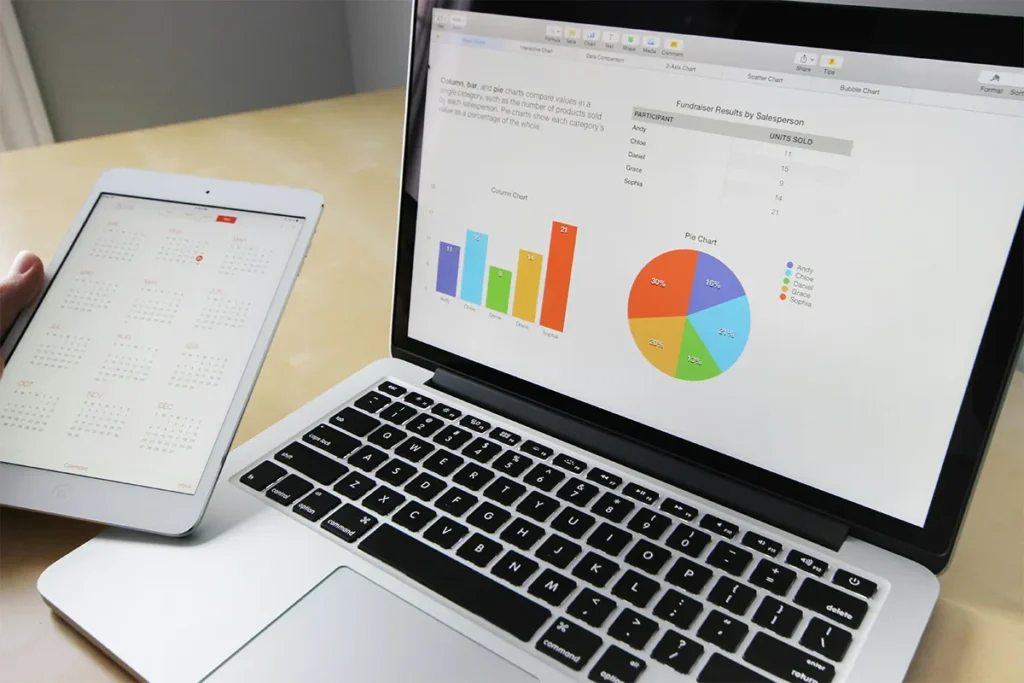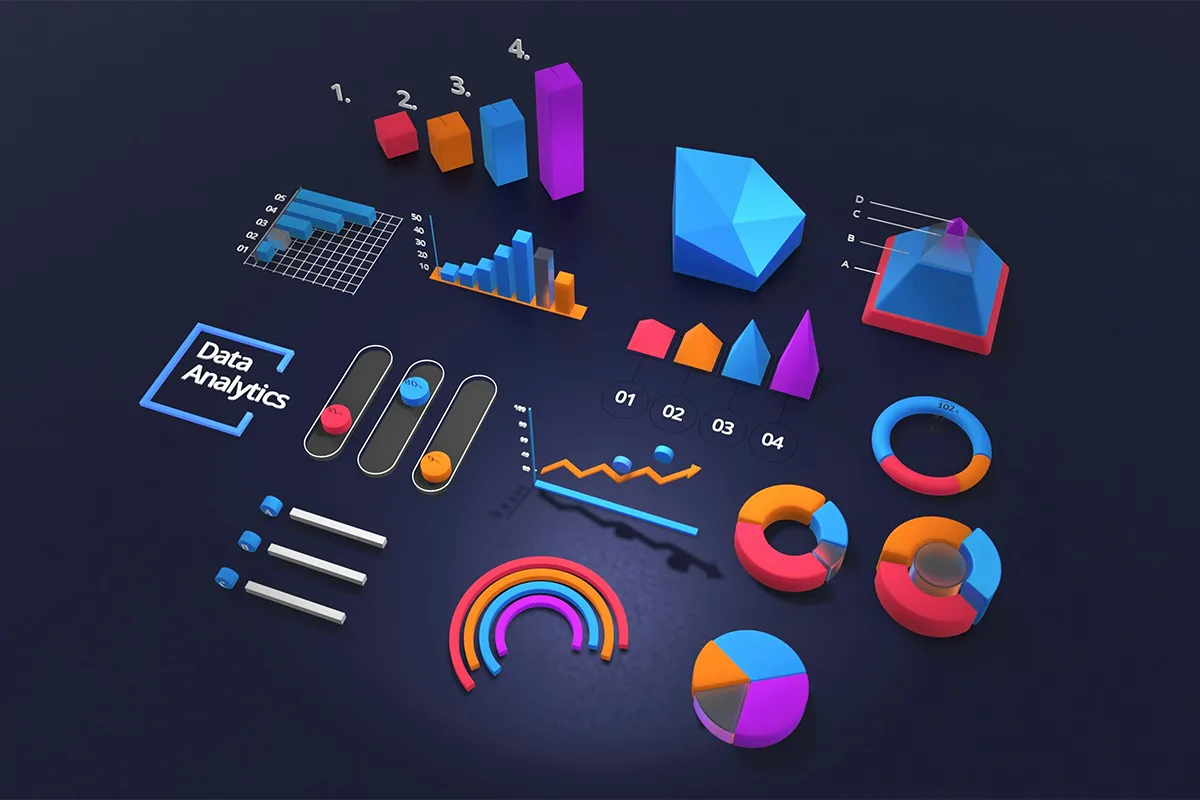Data is everything in this digital age. We use and store our data on multiple platforms, such as phones, computers, and cloud tools. This makes it scattered. Such diversified data is very hard to compile and present on one platform. Here comes in handy these data fabric architecture platforms that read and gather data from multiple channels and present them on a single tool. For instance, if a company has a cloud-based e-commerce platform for online orders, and their customers review them on social media. Similarly, they have a good CRM and a different email marketing tool. This makes it difficult to compile all the data in one place.
The data fabric architecture brings all the data from these different tools on one single page. When you get data on one page, this makes it easier for you to review that and make informed decisions. This saves you time, energy, and cuts costs. Likewise the data fabric architecture is also instrumental for improving the efficiency, productivity, and to make a business successful.
What Does Data Fabric Architecture Mean?
This idea brings different systems and tools together. It connects data from many sources into one place where people can see and use it. The special system does not move the data. It just links everything so it works as one.
When systems are joined like this, people do not have to worry about where the data is stored. They can use the information no matter where it comes from. That is why this system is called a fabric. Just like a cloth is made from many threads, a data fabric connects many tools into one system.
Why Is Data Fabric Architecture Important?
Many types of data are used in work today. Some are in the cloud, some on office computers, and some in mobile apps. All this data can be hard to find and manage.
Data Fabric Architecture makes this easier. It helps people get the right data without looking in many places. It brings everything together and keeps it safe. With this system, users do not need to move or copy their data.
When people can see all their information at once, they can work better. They do not waste time searching. This helps them make smart choices and get tasks done faster.

How Does Data Fabric Architecture Work?
This system works with many tools that help manage and connect data. These tools do different jobs but work together in one system.
- Data Ingestion: brings in data from different places.
- Metadata Management: keeps track of the data and its source.
- Data Catalogs: help people find the right data.
- Governance and Security: Keep the data safe and follow the rules.
- Data Orchestration: moves data where and when it is needed.
When all parts work together, users get the full picture. Many people use AI-powered data integration tools to bring data together. These tools help find and share the right information.
What Are the Benefits of Using Data Fabric Architecture?
Many companies choose this system because it solves problems. They can work faster and use their data in better ways.
1. Unified Data Access
This system helps people use database software from many places. They do not need to open many apps or tools. Everything they need is in one place, and that saves time.
2. Better Decision-Making
When the data is clear and easy to find, it is easier to make good choices. With real-time database integration frameworks, people can always see the most current information.
3. Increased Data Security
The system includes strong safety rules. These are part of enterprise data governance models that help keep data private and follow laws.
4. Supports Hybrid Environments
Many companies use cloud tools and office systems together. This system supports both. It works well with hybrid cloud data connectivity and synchronization solutions, so nothing is left out.
5. Cost Savings
This system can save money. It lowers the need for extra tools and stops people from copying the same data. That saves time and storage space.
What Makes Data Fabric Different from Other Systems?
Some systems, like data warehouses and data lakes, collect data into one place. That works in many cases, but it does not always connect with other tools easily.
Data Fabric Architecture is different. It does not move data into one big system. It links the data where it already lives. This allows cross-platform data visibility services to show all the data together in one clear view.
Who Uses Data Fabric Architecture?
Many groups use this system because it helps them in different ways. It works for both small and large companies.
- Healthcare: groups use it to connect patient records from clinics and labs.
- Banks: Use it to see customer details from different systems.
- Retail stores: track sales and customer likes from online and in-store places.
Even small companies can use this system. They use automated metadata management systems to find and organize data. These tools help users know what they have and how to use it.
Real-World Use Case Example
A clothing store that sells online and in shops needs to use data every day. Sales, reviews, and orders come from different places. Without this system, workers need to open many tools.
By using a data fabric, the store brings all that data into one view. Workers see sales and reviews together. They respond quickly and make better plans. They also use intelligent data discovery software that shows patterns or problems fast.
What Technologies Support Data Fabric?
Different tools help build a strong data fabric system. These tools make the system smart and easy to use.
- Cloud-native integration platforms: help move data between cloud and local tools.
- AI-based data quality monitoring tools: check that the data is correct and useful.
- Self-service data preparation solutions: allow workers to clean and use data without asking a tech expert.
When companies use these tools, they save time and keep their data ready and safe.

Challenges to Keep in Mind
Setting up a data fabric system is very helpful, but it can take some effort. Connecting all the systems takes planning and care. It is also important to make sure the data stays safe across all systems. At the beginning, using a data fabric may seem difficult without the right people or tools. However, most of these problems can be solved with good planning and smart platforms. Over time, the benefits become clear, and work becomes much easier.
Future of Data Fabric Architecture
Experts believe more companies will start using this system. As data grows, it becomes harder to handle. This system helps companies manage that growth.
In the future, new tools such as machine learning and edge computing will make these systems even better. They will help data move faster and give answers more quickly.
As more people learn how to use data, Data Fabric Architecture will help them stay ahead.
Conclusion
Data fabric computing is a smart way to use data. It connects tools and systems without moving the data. It helps people find what they need and make good choices.
This system works well with many tools. It helps both big and small companies. As data keeps growing, using this system becomes more important.
This new way to handle data helps keep everything easy to use, safe, and ready for the future.
